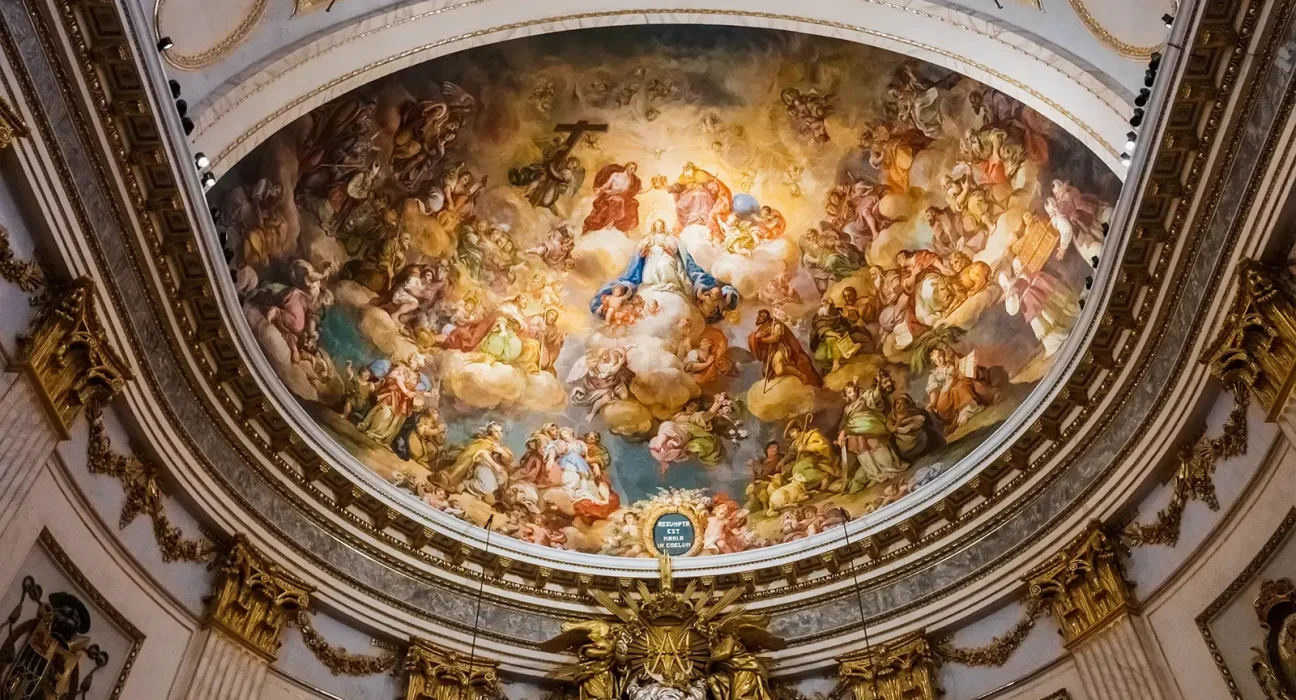Top 10 Famous Art Movements and Their Influence on Modern Art

Art has always reinvented itself by mapping and shaping the world around it. Through the ages, so many art movements have challenged conventions, harnessed the advent of new techniques, and made an indelible mark on culture and creativity. Most of these renowned art movements are a treasure trove of modern art and remain guiding lights in their own right for a number of contemporary artists. This paper identifies the top 10 most influential art movements in history and discusses their contribution toward giving modern art its current shape. Our list starts with the following.
1. Renaissance, 14th-17th century
The Renaissance, which is a French word meaning “rebirth,” was immensely important and originated in Italy, afterwards engulfing the whole European continent. It was the revitalization of the classic spirit in the arts, sciences, and philosophies, focusing on humanism, proportion, and perspective.
Key Artists: Leonardo da Vinci, Michelangelo, Raphael
Influence on Modern Art: It is in the study of the Renaissance that techniques fundamental to realistic rendering have come into play, such as perspective and chiaroscuro. The realism of this movement in the human experience still makes its presence known in modern approaches to portraiture and figurative art.
The Renaissance established the path to a more focused and detailed human-centered practice that prepared succeeding developments within the arts.
2. Baroque (17th Century)
The Baroque movement, in a sequence after the Renaissance, was all about dramatic lighting, emotional intensity, and grandeur. It is a style meant to stir reactions and can sometimes be found with religious and royal themes.
Main Artists: Caravaggio, Peter Paul Rubens, Rembrandt
Influence on Modern Art: Baroque’s heightened sense of emotion and dynamic composition transferred to modern cinematography and photography. In addition to dramatic lighting, the use of contrast in Baroque art shows up in modern visual storytelling.
The drama and movement of the Baroque period brought an emotional depth that can still be felt in modern visual arts.
3. Impressionism (1860s-1880s)
Originating from France, Impressionism was the movement against conventional academic teaching of art. It aimed at freezing moments in time, with a focus on lighting, color details, and-what is very important-movement, rather than the full details of precision. Artists often painted outdoors to capture changing light.
Principal Artists: Claude Monet, Pierre-Auguste Renoir, Edgar Degas
Influence on Modern Art: Impressionism underlined the seizing of fugitive moments and the beauty of banal scenes. Because of this, modern art received influences in color and spontaneity. For the first time, it really opened the way for artists to depict personal impressions, rather than inflexible realism.
Impressionism’s innovative vision of light and color is still widely popular today and serves as an inspiration to contemporary landscape painting and photography.
4. Post-Impressionism (1880s-1900s)
Post-Impressionism was an even more emphatic building block of Impressionism, with more emphasis on emotional and symbolic meanings than ever before. The artists of this style experimented with vibrant colors, shapes, and expressive brushwork; most of them drifted away from depicting realism.
Key Artists: Vincent van Gogh, Paul Cézanne, Georges Seurat
Impact on Modern Art: The approach of the movement to expressive form inspired modern art in moving toward subjective interpretation. Pointillism and a bright color palette associated with the era find their reflection in modern abstract and expressive art.
Post-Impressionism paved the way for more abstract manners of stylistic expression, whereby the artist could make use of color and form to convey specific emotional senses rather than the literal or direct representation of forms.
5. Expressionism, 1905-1920s
Expressionism originated in Germany, at the start of the twentieth century, and aimed at the expression of inner emotional experience rather than outer physical reality. There was the use of vivid colors, distorted forms, and exaggerated lines to show inner turmoil and mingled feelings.
Principal Artists: Edvard Munch, Wassily Kandinsky, Ernst Ludwig Kirchner
Influence on Modern Art: Expressionism became popular with its strong emphasis on emotion and the distortion of form, influencing modern abstract and emotive art, especially in the expression of mental states. It did introduce this aspect: art could represent an artist’s inner world rather than external appearances.
The extreme emotionality of Expressionism has filtered into most aspects of modern artistic expression, including film, theater, and digital art.
6. Cubism – 1907-1920s
Initiated by Pablo Picasso and Georges Braque, Cubism abandoned the techniques of perspective and representation that had been conventional in the Western art since the Renaissance. Cubist paintings are characterized by geometric forms of the subject that has been captured from multiple viewpoints simultaneously.
Cubism Key Artists: Pablo Picasso, Georges Braque, Juan Gris
Influencing Modern Art: Cubism’s deconstruction of form with the use of geometric shapes influenced modern architecture, design, and digital art. It started the view that different perspectives in one piece were viable, which led to abstraction and surrealism.
Cubism concentrated on the breaking of objects into their basic shapes and reconstructing them, thus changing the approach to visual composition in modern art.
7. Surrealism (1920s-1950s)
Contrarily, surrealism is the art movement concerned with the release of the subconscious mind, drawing inspiration from dreams, fantastic events, and the irrational. In opposing classic reasonableness, it operates with bizarre dream images.
Key Artists: Salvador Dalí, René Magritte, Max Ernst
Influence on Modern Art: The subconscious and irrational element in surrealism influenced modern art, film, and literature. This opened the door to abstract thought in the visual arts-to this present date, it is a motive for creativity and fantasy-based works.
The dreamlike aesthetics of surrealism have habituated modern visual culture with its highest influence in fantasy genres and digital art.
8. Abstract Expressionism (1940s-1950s)
Oddly, Abstract Expressionism actually had its beginnings in the United States in a response to the trauma of World War II. It focused on spontaneous, gestural marks and emphasized the very act of painting itself as expression.
Key Artists: Jackson Pollock, Mark Rothko, Willem de Kooning
Influence on Modern Art: Abstract Expressionism favored the artist’s belief in art as an emotional outlet. Its practice clarified the path for modern abstract art. The freedom of expression originally encountered in this movement set the stage for later forms of modern art.
The emphasis that Abstract Expressionism placed on how the work was created rather than on the final product carries over into performance art, conceptual art, and installations.
9. Pop Art (1950s-1960s)
Pop Art is an art movement that originated both in Britain and the United States, using popular images taken from advertisements and mass media. The style blurred the line between high art and commercial culture often with bright colors and bold patterns.
Key Artists: Andy Warhol, Roy Lichtenstein, Richard Hamilton
Influence on Modern Art: The ease and playfulness of the style found their way into graphic design and advertising and into modern media. In a broader sense, the movement restructured the relation between art and popular culture, bringing about a broader appeal.
Its celebration of consumerism and mass culture remains relevant today, especially in advertisements, digital media, and fashion.
10. Minimalism 1960s-1970s
Minimalism sought to strip art down to the bare essential elements, dealing with simplicity, repetition, and often a monochromatic color palette. It sought to rid itself of personal expression or emotion, allowing form to stand on its own.
Minimalism: Key Artists Donald Judd Agnes Martin Frank Stella
The impact it has had on Modern Art: Minimalism’s clean lines and simplicity influence modern architecture, interior design, and graphic design. The “less is more” mentality carries on to this date, shaping aesthetics in digital art and branding.
We could find the influence of minimalism on contemporary design with an emphasis on the form and space in modern architecture, product design, and minimalist art.
Conclusion
Each of these art movements contributed to modern art in an important way: it changed the traditional perspective and called for new forms of expression. From the human-centered realism of the Renaissance to the rebellious minimalism of the 20th century, these movements armed artists with tools, styles, and philosophies to push creative boundaries. Understanding these famous art styles reveals how the evolution of art is a reflection of change in society, mirroring shifting perspectives and endless creativity.
Contemporary artists continue to draw from them, combining traditional techniques with innovative contemporary means. These recognized art movements stand today as testaments to the power of art to shape society, evoke emotion, and inspire new thought. Whether you’re an artist or an enthusiast, taking a tour of the journey that art has made through these movements evokes deeper appreciation for the creativity and vision that marks human history.
Read also: How Practicing Mindfulness Can Enhance Your Physical and Mental Well-being











